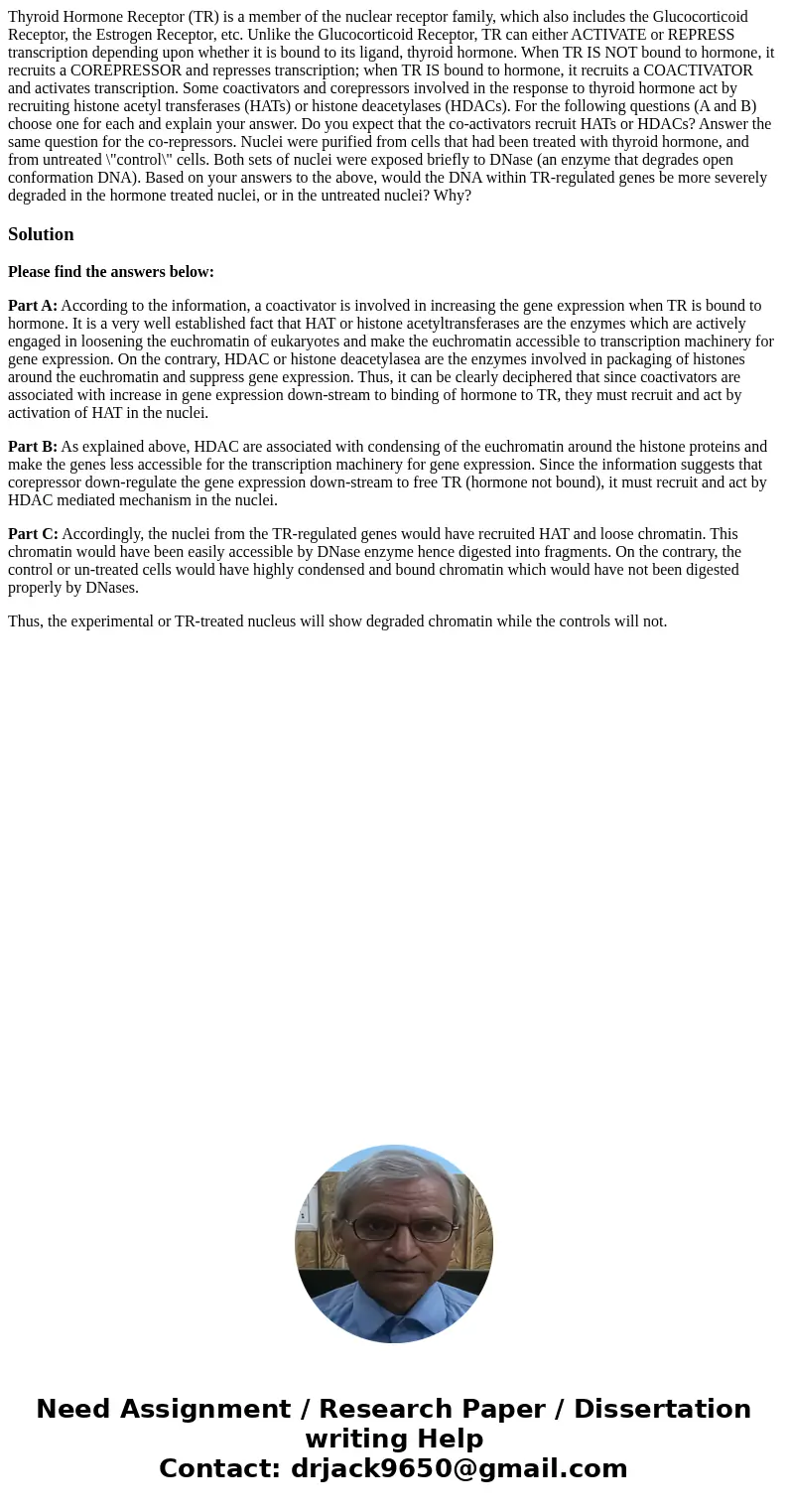Thyroid Hormone Receptor TR is a member of the nuclear recep
Solution
Please find the answers below:
Part A: According to the information, a coactivator is involved in increasing the gene expression when TR is bound to hormone. It is a very well established fact that HAT or histone acetyltransferases are the enzymes which are actively engaged in loosening the euchromatin of eukaryotes and make the euchromatin accessible to transcription machinery for gene expression. On the contrary, HDAC or histone deacetylasea are the enzymes involved in packaging of histones around the euchromatin and suppress gene expression. Thus, it can be clearly deciphered that since coactivators are associated with increase in gene expression down-stream to binding of hormone to TR, they must recruit and act by activation of HAT in the nuclei.
Part B: As explained above, HDAC are associated with condensing of the euchromatin around the histone proteins and make the genes less accessible for the transcription machinery for gene expression. Since the information suggests that corepressor down-regulate the gene expression down-stream to free TR (hormone not bound), it must recruit and act by HDAC mediated mechanism in the nuclei.
Part C: Accordingly, the nuclei from the TR-regulated genes would have recruited HAT and loose chromatin. This chromatin would have been easily accessible by DNase enzyme hence digested into fragments. On the contrary, the control or un-treated cells would have highly condensed and bound chromatin which would have not been digested properly by DNases.
Thus, the experimental or TR-treated nucleus will show degraded chromatin while the controls will not.

 Homework Sourse
Homework Sourse